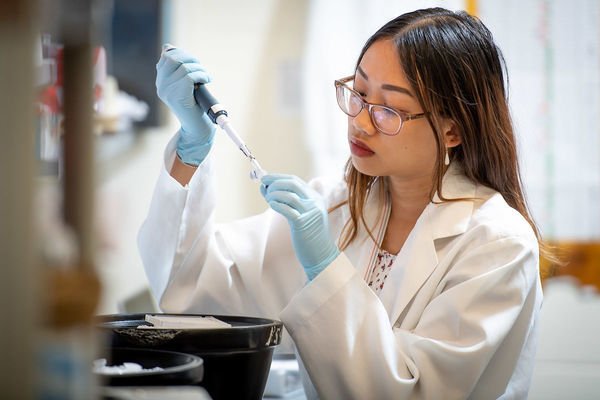
Several undergraduate students from the University of Notre Dame's College of Science spent their summers on campus conducting research on topics including medicine, ecology, physics and mathematics. Their enthusiasm and dedication toward their projects embodied the spirit of using scholarship and creative endeavor to advance scientific understanding of the world.
The openness unique to the summer schedule, which allowed them to focus and delve deeper into their research, was a top reason they enjoyed their experiences.
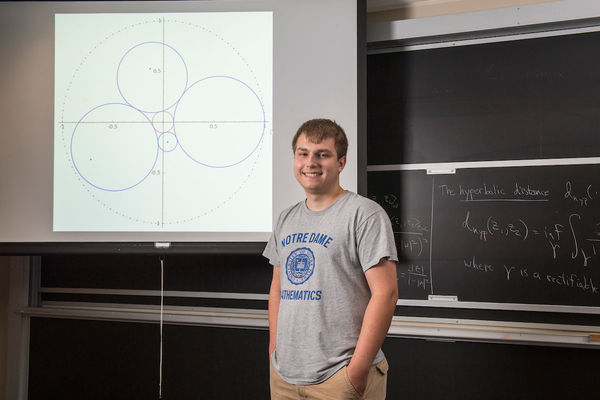 Nicholas Lohr
Nicholas Lohr
“I enjoy the freedom of thought that working in the summer brings about,” said Nicholas Lohr, an honors mathematics senior in the lab of Jeffrey Diller, professor and chair of the mathematics department. “Instead of being pulled in four different directions from classes, I can instead focus on just one thing, which is liberating for me.”
For Lohr, the lack of distractions was crucial. His project aimed to understand the Riemann mapping theory using circle packings, which meant he was trying to find out how to mathematically deform irregular shapes into circles. To do this, Lohr had to learn new types of geometry, a process he enjoyed despite the challenge it posed.
“Instead of doing high school geometry on a flat surface, I learned geometry all over again on, say, a sphere,” he said.
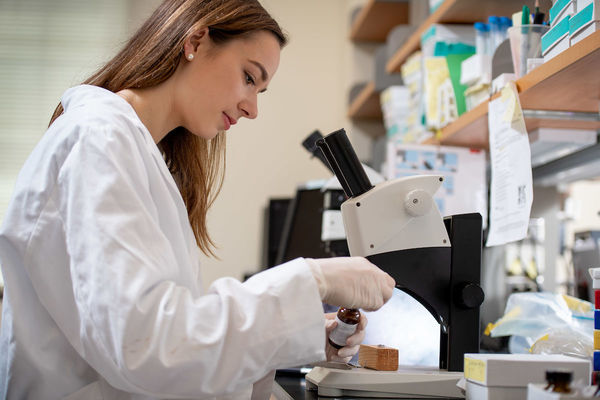 Emma Sheedy
Emma Sheedy
Emma Sheedy, a junior majoring in mathematics and preprofessional studies, said the summer allowed her to do work she did not get a chance to do during the school year.
“I’m mostly enjoying the experimental design aspect of this summer,” she said. “When I did research in the school year… I was rarely given the responsibility to help plan experiments. Working full-time this summer, I was able to help design experiments and I learned about the trial-and-error aspect of true scientific discovery.”
Sheedy worked under the direction of graduate student Elizabeth Harper in the laboratory of Sharon Stack, professor and director of the Harper Cancer Research Institute. Those in the Stack lab study the effects of aging on the metastasis of ovarian cancer. In the hopes of gaining insight on age-related success of the cancer, Sheedy’s research focused on finding the structural and functional differences that arise in collagen due to age.
Like Sheedy, Vy Sanders, a junior studying neuroscience and behavior, also enjoyed the increased research exposure the summer offered her.
 Vy Sanders
Vy Sanders
“Through this summer research, I was exposed to the multiple stages of research, learning and mastering new scientific techniques and data analysis,” she said. “[I also] gained experience working with research animals.”
Sanders worked at the lab of Kasturi Haldar, the Rev. Julius A. Nieuwland, C.S.C., Professor and the Parsons-Quinn Director of he Boler-Parseghian Center for Rare and Neglected Diseases. Sanders’ work involved developing experimental treatments for a multisystem disease called Kabuki syndrome. The treatment stimulates stem cell growth in the hippocampi of mice affected by the disease.
Other students enjoyed the spending time with their research teams, which provided a friendly and supportive learning environment for research to take place.
Jocelyn Gaona, a senior majoring in neuroscience and behavior, said, “I really enjoy the lab environment because it fosters my learning and gives me the opportunity to expand my knowledge on a daily basis.”
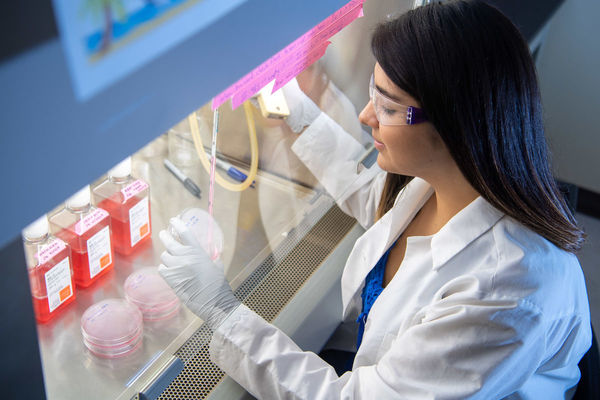 Jocelyn Gaona
Jocelyn Gaona
She credits two graduate students in her lab, Alyssa Lesko and Casey Stefanski, with showing her that research is an opportunity to gain knowledge while also making a difference for others.
Gaona worked in the Harper Cancer Research Institute in the lab of Jenifer Prosperi, adjunct assistant professor of biological science at Notre Dame and assistant professor of biochemistry and molecular biology at Indiana University School of Medicine-South Bend. Gaona’s research focused on a tumor suppressor called Adenomatous Polyposis Coli (APC) and a tetraspan protein called Epithelial Membrane Protein 2, both of which mediate cellular polarity and are upregulated in several epithelial cancers.
Christina Dulal, a sophomore studying physics, enjoyed learning new skills from her research team. She worked in the Nuclear Physics Lab under the direction of Ani Aprahamian, the Friemann Professor of Physics on a project known as ICEBall/fIREball. The research uses an Internal Conversion Electron (ICE) array to better understand the nature of nuclear states.
“[My team members] were very helpful in teaching me how to use the accelerators,” she said. “They were also extremely supportive, friendly, and always willing to answer any questions I had.”
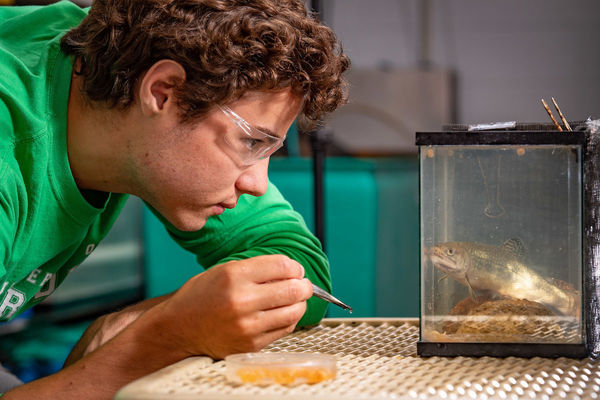 Nathan Hermann
Nathan Hermann
Nathan Hermann, a senior biology and sociology major, said he enjoyed “discussing possibilities of future directions, questions, and explanations with other members of the lab.”
He worked with Dominic Chaloner, associate teaching professor, in the lab of Gary Lamberti, professor of biology. Those in the Lamberti lab investigate how Pacific Salmon migration interacts with the feeding ecology of brook and brown trout in the migratory streams, as well as any health implications arising from those interactions.
Finally, for junior Peter Koszuta, who studies music theory and preprofessional studies, the applicability of his research to the future of healthcare was one of the most appealing aspects of his summer work.
His project in the lab of Jon Camden, associate professor of chemistry, was about the characterization and detection of various potentially counterfeit pharmaceutical drugs. He utilized a technique called surface enhanced Raman spectroscopy. He aims to use the data and spectra from his research in the development of portable devices to assist in checking potential counterfeit drugs for active ingredients.
“The lab experience was very enjoyable, as was the chance to do some interesting chemistry which ultimately could help patients,” he said.
To explore what it’s like to do undergraduate research, visit the Fall Undergraduate Research Fair (FURF) from 6 to 9 p.m. Thursday, Oct. 25 in the Jordan Hall of Science galleria.